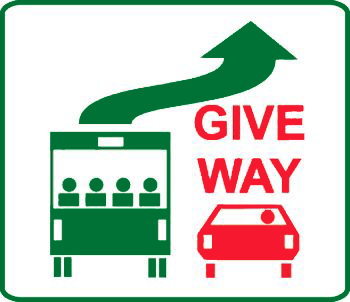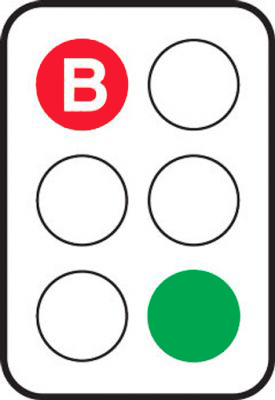Road rules for buses
Specific NSW road rules apply to buses. These include rules on stopping at bus stops, obeying bus (B) signals and using bus lanes.
Priority for buses
Other vehicle drivers should give way to a bus displaying the give way sign in a built up area, when the bus is about to enter or proceed in the lane or line of traffic, and the bus is in front of the driver.
Bus drivers are required to indicate for 5 seconds before pulling out from a stationary position at the side of the road. Buses are still required to obey the road rules when entering the traffic.

Stopping at a bus stop
Bus drivers should pull up so the entrance and exit doors are as close as possible to the kerb at a bus stop:
- Signal your intention.
- Stop the bus smoothly.
- Stop parallel with the kerb.
- Stop within 300 millimetres of the kerb, measured from the front bus step.
- Stop the bus without hitting the kerb.
- Apply the bus stop brake – if the bus does not have a bus stop brake, then you must apply the normal parking brake.
- Indicate for at least 5 seconds before pulling out of a bus stop.
Bus (B) signals
B signals separate buses and other vehicles at intersections with traffic lights. B signals are attached to the traffic lights and show a white B on a black background. Some traffic lights have a red, yellow and white signal attached.
Shortly before the usual traffic signals change to green, the B signal lights up white. Buses may proceed in any direction unless signs or markings indicate otherwise.

Bus lanes
Bus and bus only lanes are marked by signs, or by lane markings on the road.
Buses may use these lanes, as long as they are:
- public buses constructed principally to carry persons
- equipped to seat more than 8 adults, including the driver, and
- used to convey passengers for hire or reward, or in the course of trade or business.